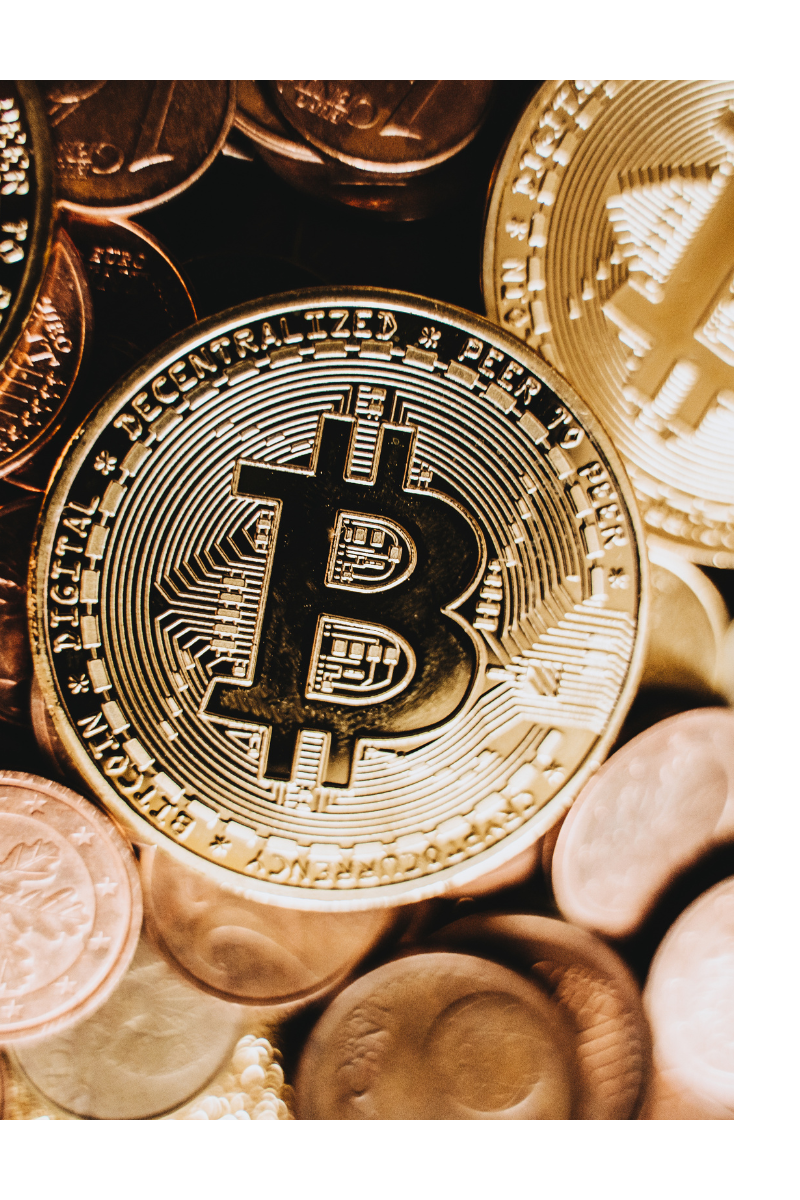U.S. Bitcoin Strategic Reserve: What It Means for Your Portfolio
Bitcoin has emerged as a key player, often referred to as “digital gold” due to its scarcity and security. The establishment of the U.S. Bitcoin Strategic Reserve and the Digital Assets Stockpile, announced by the White House in March 2025, marks a significant moment in integrating cryptocurrencies into the broader financial ecosystem.
For Americans approaching retirement and managing substantial portfolios, this new reserve raises important questions about how digital assets could impact their investment strategies. Here’s what you need to know.
Understanding the U.S. Bitcoin Strategic Reserve
On March 6, 2025, the White House announced the creation of the Bitcoin Strategic Reserve, accompanied by an executive order titled Establishment of the Strategic Bitcoin Reserve and United States Digital Asset Stockpile. This initiative is grounded in the idea that Bitcoin’s fixed supply and its robust security features make it an increasingly valuable asset for nations to hold. The White House outlined that Bitcoin’s 21 million coin limit, along with its immutability and security, provides a strategic advantage to countries that secure early access to it.
Bitcoin’s scarcity has made it a reliable store of value, much like gold, but with the added benefit of being a digital asset. By capping the total supply of Bitcoin, the cryptocurrency is insulated from inflationary pressures typical of fiat currencies. This predictable, deflationary feature makes Bitcoin so appealing, especially as governments like the United States look to leverage it for strategic purposes.
 Key Features of the Reserve
Key Features of the Reserve
The Bitcoin Strategic Reserve will be housed within the U.S. Treasury and capitalized using assets from criminal and civil forfeitures rather than taxpayer dollars. By holding approximately 200,000 Bitcoin, the U.S. will control nearly 1% of the entire Bitcoin supply, which could impact market liquidity in profound ways. The reserve will not be used to trade Bitcoin but will instead be a long-term store of value.
Bitcoin’s security lies in its decentralized nature and its mining process. Bitcoin transactions are verified by miners who solve complex cryptographic puzzles to add blocks to the blockchain, thus helping secure the network. The amount of Bitcoin rewarded to miners decreases over time, helping ensure that fewer coins enter circulation, which in turn could lead to upward price pressure over the long term.
April 2025 Market Update: Where Does Bitcoin Stand Today?
As of mid-April 2025, Bitcoin continues to experience sharp volatility, recently rebounding from below $77,000 to over $87,000. This surge has been fueled by increased institutional interest and a weakening U.S. dollar. Analysts have also noted a movement of over 170,000 BTC from mid-term holders—an indicator of potential near-term volatility.
In parallel, global institutions are ramping up adoption. In Brazil, fintech firm Meliuz is expanding its Bitcoin reserves strategy, showing how digital assets are becoming part of strategic corporate treasuries worldwide.
Meanwhile, the newly announced U.S. Bitcoin Strategic Reserve and Digital Assets Stockpile—funded by assets from criminal and civil forfeitures—highlight a pivotal moment for crypto in traditional finance. This further legitimizes Bitcoin as a long-term store of value, particularly as the Treasury applies institutional-grade security measures such as cold storage and multi-signature wallets.
The Impact on Monetary Policy and Investment Strategies
One of the most important aspects of Bitcoin is its departure from traditional monetary policy. Unlike central banks that can adjust the money supply by engaging in actions like quantitative easing or quantitative tightening, Bitcoin’s supply is fixed and governed by a pre-determined schedule. This ensures that Bitcoin is not subject to the same inflationary risks that can erode the value of fiat currencies.
The introduction of the U.S. Bitcoin Reserve presents an opportunity to rethink traditional investment strategies, particularly for those who are nearing retirement. As the Federal Reserve continues to navigate the complexities of the U.S. economy, including low interest rates and inflationary pressures, digital assets like Bitcoin offer a potential hedge against these risks.
Bitcoin as a Portfolio Diversifier
The U.S. Bitcoin Strategic Reserve shows the growing institutional interest in Bitcoin and cryptocurrencies. As government entities move into the space, many investors are beginning to reconsider their approach to digital assets. Diversification has long been a cornerstone of effective portfolio management, and digital assets such as Bitcoin may help provide a new avenue for wealth preservation.
Potential Benefits of Adding Bitcoin to Your Portfolio
- Inflation Hedge: As Bitcoin operates outside traditional monetary systems, it is not directly impacted by inflationary pressures in the same way that fiat currencies are. This makes it an attractive option for individuals seeking to help protect their wealth in an environment of rising inflation.
- Scarcity and Security: Bitcoin’s 21 million coin cap guarantees that its supply will never increase, unlike fiat currencies, which can be printed at will by central banks. This scarcity, coupled with its secure blockchain, gives Bitcoin its reputation as “digital gold.”
- Global Accessibility: Bitcoin is not bound by borders or government regulations. This makes it an increasingly attractive investment for those looking to maintain wealth in a globalized, interconnected financial system.
- Decentralized Nature: Unlike traditional investments tied to specific companies or governments, Bitcoin is decentralized. This means it is less susceptible to risks related to government policies, corporate earnings, or political events.
Understanding the U.S. Digital Assets Stockpile
In addition to the Bitcoin Reserve, the White House executive order introduced the U.S. Digital Assets Stockpile, encompassing a broader range of digital assets beyond Bitcoin. The stockpile may include other cryptocurrencies, such as Ethereum, Solana, or stablecoins, foundational platforms for various decentralized applications and financial services.
The U.S. Treasury Department will manage the Digital Assets Stockpile, and its goal is to help provide a secure, orderly framework for the United States to hold, track, and manage these assets. For affluent investors, this move signals a more formal recognition of digital assets within traditional financial systems. It could have implications for taxation, regulation, and even market liquidity.
As digital assets become more widely recognized and integrated into the financial system, investors may find it necessary to allocate a portion of their portfolio to these assets as part of their long-term retirement strategy.
 The Security of the U.S. Reserve: Cold Storage and Multi-Signature Protocols
The Security of the U.S. Reserve: Cold Storage and Multi-Signature Protocols
Given the importance of maintaining the integrity and security of such a valuable asset, the U.S. Treasury will use cold storage to help safeguard the digital assets. Cold storage involves keeping the private keys that control the assets entirely offline, making them less vulnerable to hacking attempts. Additionally, using multi-signature wallets, where multiple parties must approve any transactions, will add an extra layer of security.
For investors, this level of institutional security might make digital assets more attractive. The U.S. government’s commitment to security and the technical sophistication of its approach provide a model for private investors to follow when managing their digital assets.
Cryptocurrency in the Current Market Volatility
The cryptocurrency market has been particularly volatile in recent years, and it’s essential to understand how this impacts potential investments, especially for those approaching retirement. Bitcoin, Ethereum, and other cryptocurrencies have experienced significant price fluctuations, driven by various factors, including regulatory changes, technological advancements, and shifts in investor sentiment.
In 2025, the cryptocurrency market continues to exhibit sharp volatility, with Bitcoin and other major cryptocurrencies experiencing significant price swings. For example, Bitcoin dropped from $65,000 in late 2021 to under $20,000 in mid-2022 and surged above $40,000 by late 2023. In 2025, we’ve seen even more fluctuations as digital assets navigate regulatory changes and evolving market dynamics. This ongoing volatility can pose challenges for traditional investors, especially those nearing retirement, who often prioritize more stable and predictable investment returns.
However, this volatility is part of what makes cryptocurrencies such an interesting asset class. The market’s fluctuations may offer significant upside potential for investors who can withstand short-term market swings. The increasing institutional interest in cryptocurrencies and the recent move by the U.S. government to establish a Bitcoin Strategic Reserve signal growing legitimacy and long-term potential for digital assets.
At the same time, it’s crucial to consider the risks. Digital currencies are still relatively new compared to traditional asset classes like stocks and bonds, and they can be subject to unpredictable movements. Furthermore, the evolving regulatory landscape, particularly with government-backed digital currencies and new regulations, can influence the market in unforeseen ways.
For investors nearing retirement, it’s especially important to balance the potential for high returns with the risk of significant losses. Cryptocurrencies may offer a high-risk, high-reward opportunity, but incorporating them into a retirement portfolio requires careful consideration of risk tolerance, financial goals, and overall portfolio diversification.
How Agemy Financial Strategies Can Help 
As the U.S. establishes a Bitcoin Strategic Reserve, understanding its impact on your retirement planning is key, especially for high-net-worth individuals in Connecticut and Colorado. Agemy Financial Strategies offers guidance in navigating this evolving landscape. Here’s how we can assist:
- Diversification and Risk Management: We help you balance digital assets like Bitcoin with traditional investments to help manage risk while seizing new opportunities.
- Tax Efficiency: We help ensure your investment strategy is tax-efficient, guiding you through potential changes in tax laws for digital assets.
- Educational Resources: Stay informed with our market updates and insights, empowering you to make confident, well-informed decisions.
- Retirement Planning: We integrate digital assets into your long-term retirement plan, helping you adjust to market changes and achieve your financial goals.
- Holistic Financial Planning: We provide comprehensive planning, considering all aspects of your wealth, from investments to estate planning, helping ensure a more secure financial future.
Final Thoughts: Preparing Your Portfolio for the Future
The introduction of the U.S. Bitcoin Strategic Reserve and the Digital Assets Stockpile represents a fundamental shift in how governments and institutional investors view cryptocurrencies. For affluent individuals, this development highlights the importance of considering digital assets as part of a diversified investment portfolio.
While Bitcoin and other digital assets have risks, they also offer opportunities to help hedge against inflation, gain exposure to a growing global market, and benefit from their scarcity and security. By staying informed and working with trusted financial advisors, you can make educated decisions about how digital assets might fit into your retirement plan. The future of finance is digital, and the U.S. Bitcoin Strategic Reserve is just the beginning of the larger conversation about how digital assets will shape investment strategies for years to come.
Contact us today to learn how we can help optimize your portfolio for the present and future.
Frequently Asked Questions (FAQs)
1. What exactly is a Bitcoin Strategic Reserve, and how does it work?
A Bitcoin Strategic Reserve is a government-held reserve of Bitcoin, intended to help stabilize and secure digital assets at a national level. The U.S. government created it to capitalize on Bitcoin’s fixed supply of 21 million coins, aiming to leverage its scarcity and security. The reserve is designed to store Bitcoin safely and help ensure it is not sold but rather held as a long-term asset to support digital asset infrastructure.
2. How can Bitcoin’s scarcity impact my portfolio?
Bitcoin’s fixed supply means that, over time, it becomes increasingly scarce, which could drive its value higher, especially as demand for digital assets grows. For investors, this scarcity could lead to potential appreciation in Bitcoin’s value, making it a compelling asset to consider for long-term wealth storage. However, it’s important to carefully assess your portfolio’s risk tolerance before adding Bitcoin, as its volatility is still a key factor.
3. What are the risks of including digital assets like Bitcoin in a retirement portfolio?
While Bitcoin has the potential for high returns, it also carries significant risks due to its volatility. The value of Bitcoin can fluctuate drastically in short periods, which could result in losses for investors who are not prepared for such market swings. Additionally, the evolving regulatory environment surrounding digital assets adds a layer of uncertainty that investors must consider when including Bitcoin in their portfolios.
4. How can digital assets like Bitcoin affect my tax strategy?
Investing in digital assets, including Bitcoin, can impact your tax strategy, as the IRS treats Bitcoin as property. This means that buying, selling, and trading Bitcoin can trigger capital gains taxes. Additionally, the evolving tax laws surrounding cryptocurrency may introduce new reporting requirements or tax treatments. Working with a financial advisor can help you optimize your tax strategy while complying with current regulations.
5. Is it safe to invest in digital assets like Bitcoin through my retirement account?
While some retirement accounts allow for investments in Bitcoin and other cryptocurrencies, it’s important to know the rules and potential risks. Bitcoin’s volatility could introduce instability to your portfolio, and not all retirement accounts offer exposure to digital assets. Additionally, self-directed IRAs and 401(k)s may incur higher fees and complexities. Consulting with a financial advisor can help you determine whether digital assets are a suitable investment for your retirement goals.
Disclaimer: This content is for educational purposes only and should not be considered financial or investment advice. Please consult with the fiduciary advisors at Agemy Financial Strategies before making any investment decisions.












